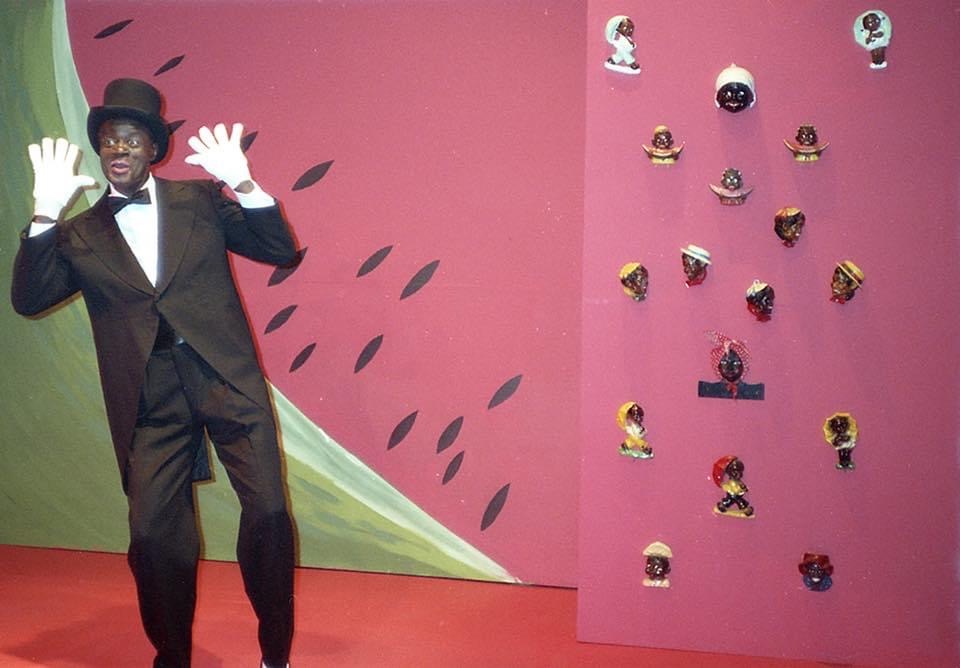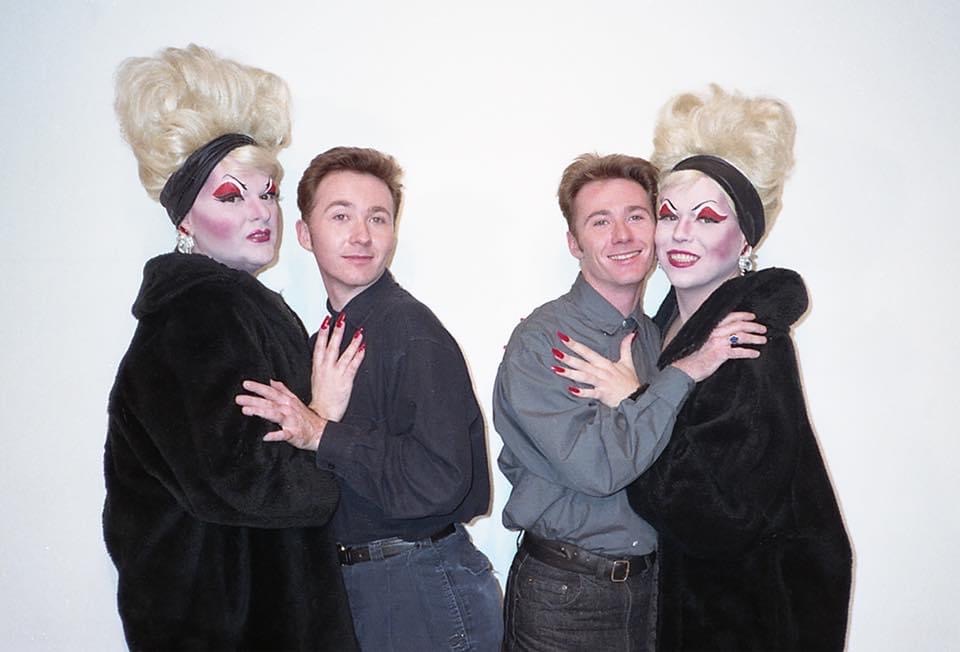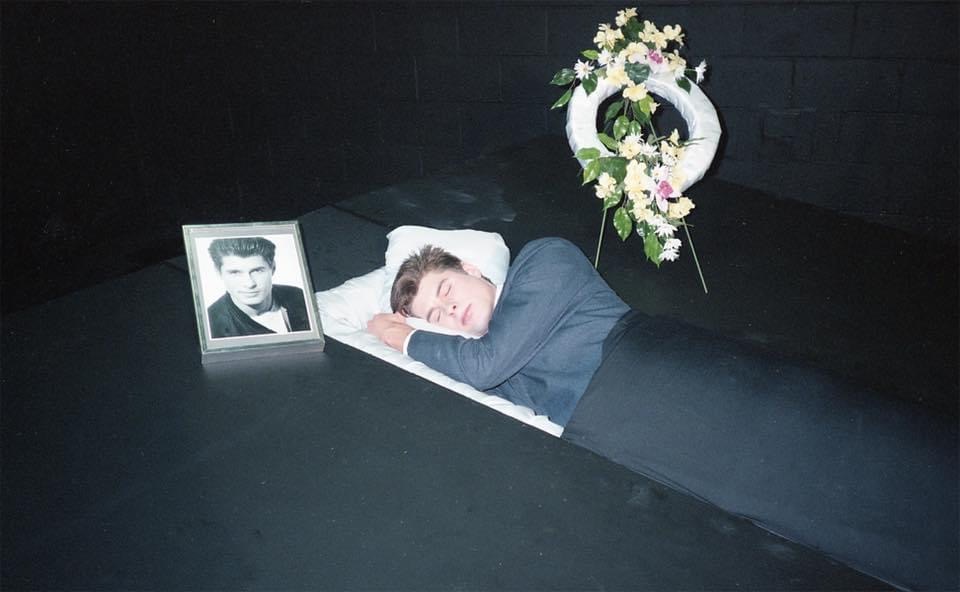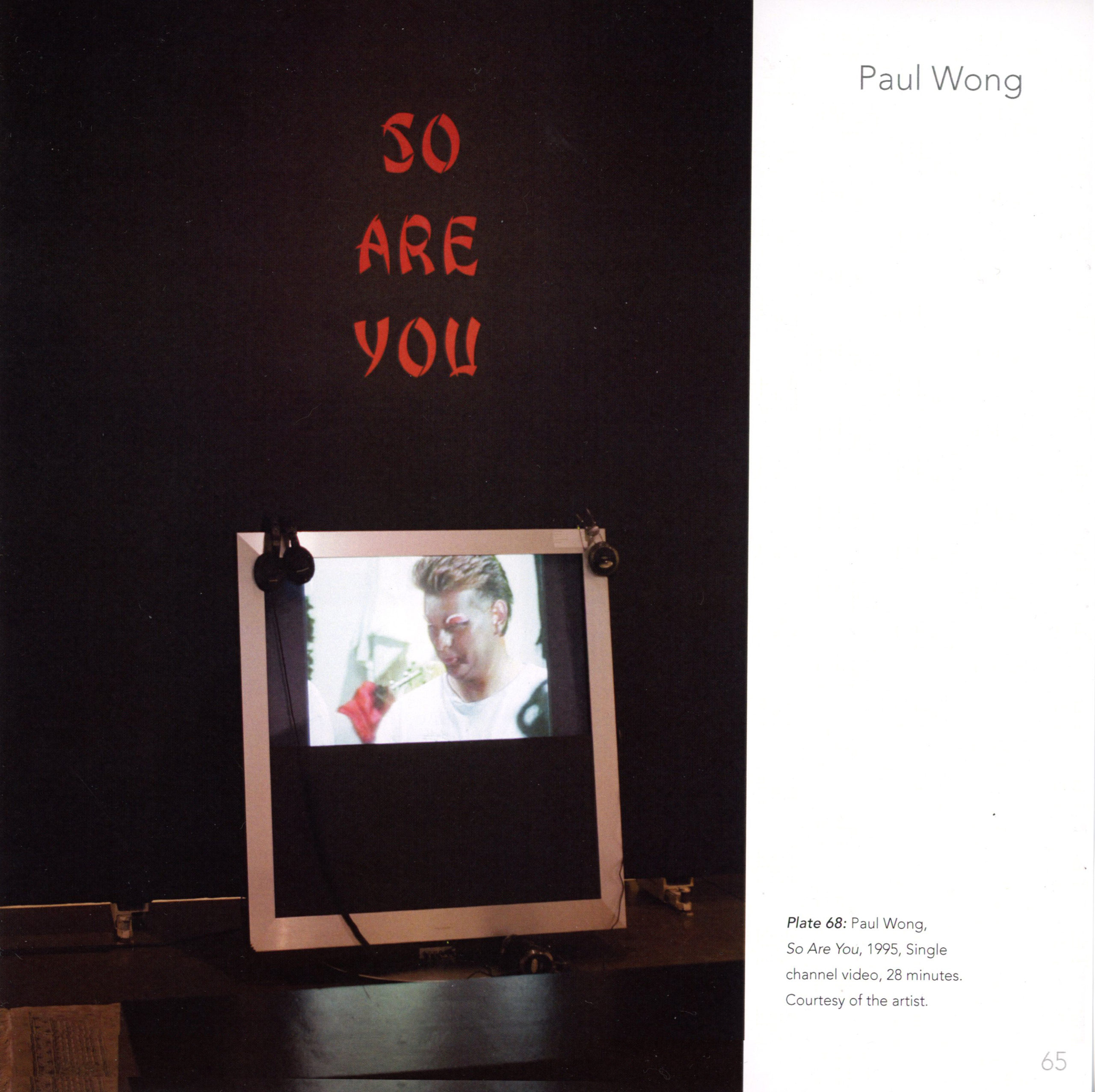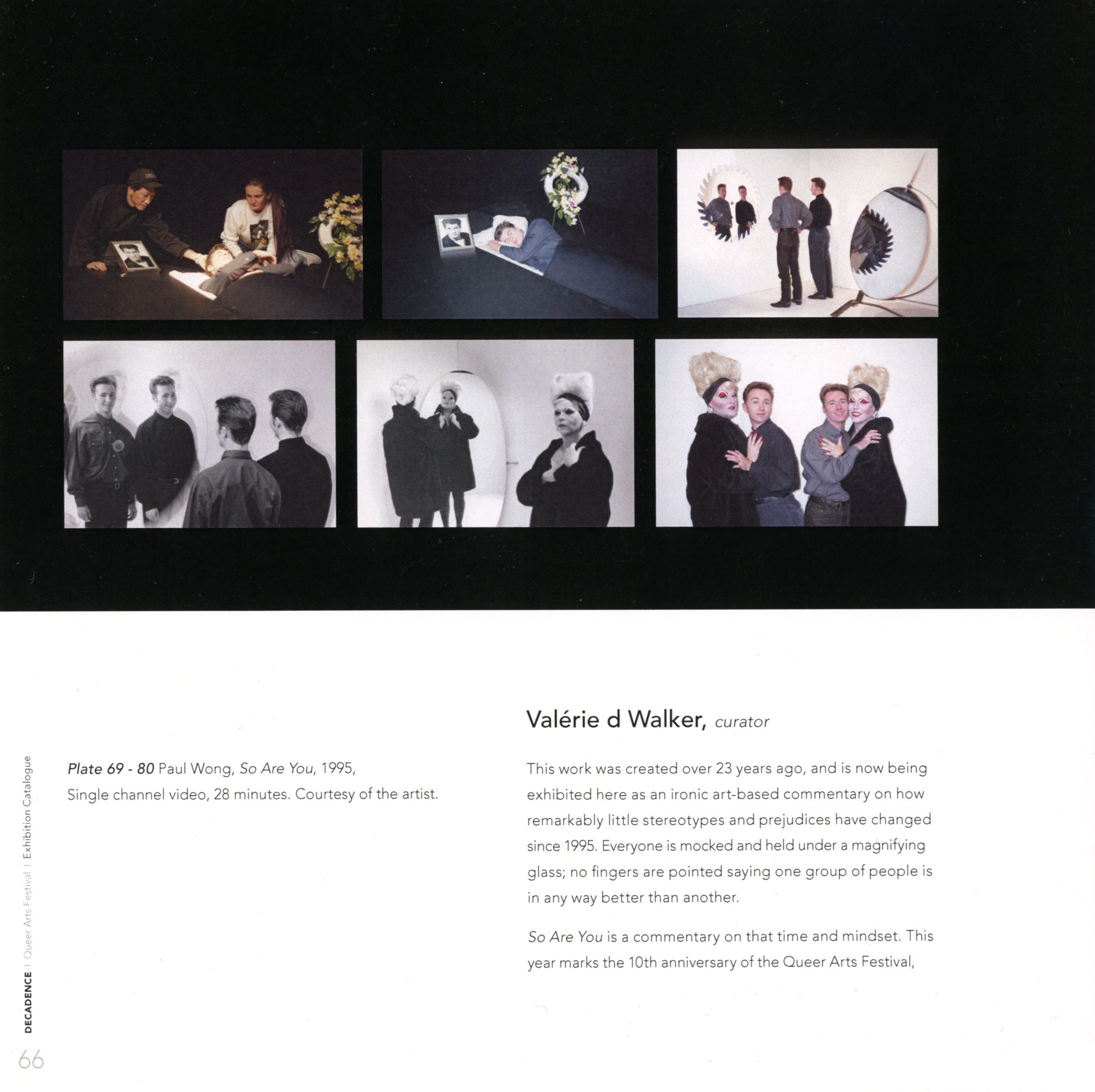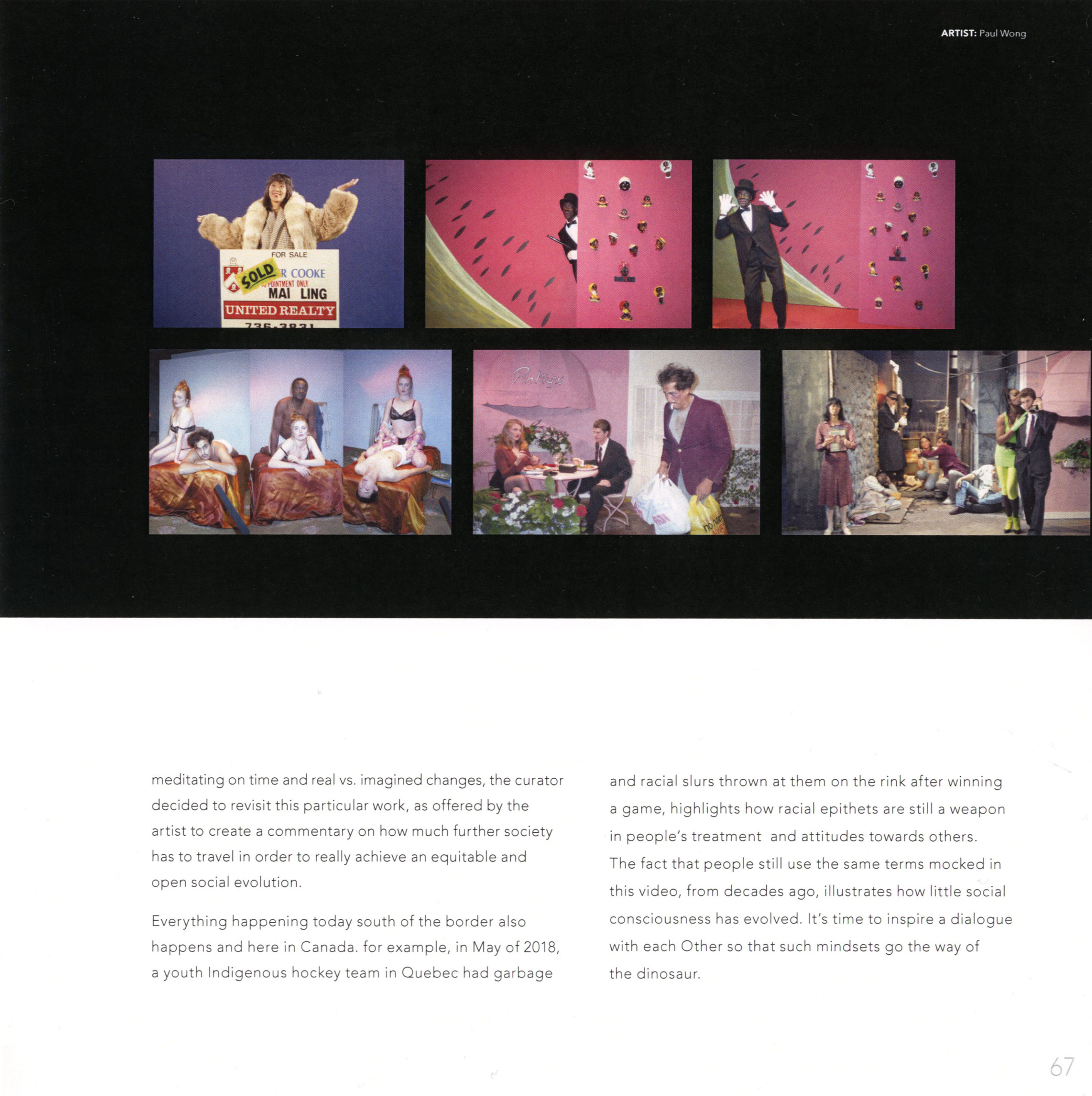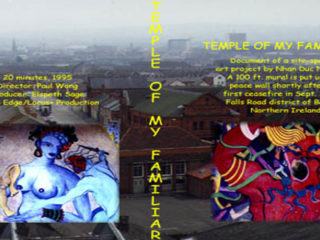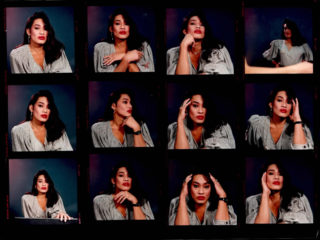SO ARE YOU
Paul Wong, 1995
Single channel video, 28 min., colour, stereo
Collections: National Gallery of Canada
Distributor: Vtape, Video Out
So Are You is a 25 minute videotape about the difficulties of assuming ones self-identity. Identity is shaped and informed by the dominant culture, often producing stereotypes that are reinforced by the media. Through such structures racist behaviour is learned and condoned. So Are You uses unconventional structures and casting to criticize stereotypes. The eighteen cast members include Natives, Asians, Blacks and Whites. Paul Wong continues to explore the idea of self-identity by investigating gender boundaries through the inclusion of a set of identical male twins and two female impersonators who portray twins and two female impersonators who portray twins in the cast. The video uses recognizable television and cinematic framing devices to highlight the idea of the construction and dissemination of stereotypes through the broadcast news, cinema verite, interviews, etc. Comprised of short scenes, So Are You is faced paced and entertaining.
“Once more racial and sexual stereotypes and prejudices are explored in this complex work, in which narrative fiction combines with licentious stories about racism or sexism told directly to the camera. The relationship between appearance and reality comes again into question. Without passing judgement the artist takes us behind the elaborate facade concealing our prejudices.”
-Jean Gagnon, National Gallery of Canada, On Becoming a Man, 1995.
“Paul Wong’s SO ARE YOU looks into the mirror of cultural stereotypes, challenging us to consider how stereotypes come to shape our understanding of the world, and perpetuate racism and sexism. While cultural activism had by the mid-90’s raised many people’s consciousness about the politics of difference and that history had been written in the interests of the privileged, the 80’s saw the mobilisation of the notion of “political correctness” as the mirror image of tokenism – both means the cultural centres have used to silence dissenting voices – and in the 90’s charges of “pc” became a common way in which to silence dissent. Mobilising painful stereotypes and retelling the racist jokes by which privilege asserts itself, So Are You is without question “politically incorrect” if by this we are to include representations which repeat racist and sexist stereotypes. While many viewers question the effectiveness of Wong’s strategy in that the stereotypes and jokes reappear without any direct comment, it is paradoxically an example of the kind of work most quickly dismissed as “pc” (politically correct) – media which challenges the viewers, particularly middle class white viewers, to acknowledge and confront internalised racism, classism and sexism. The whole notion of “pc” has proven to be as effective as the tag of “not art” and “porn” in silencing voices which question the continuation of the status quo and challenge the claim that our society is a democracy.”
– Excerpt from VOID, Curatorial Essay by Ken Anderlini (Nov. 2000)




